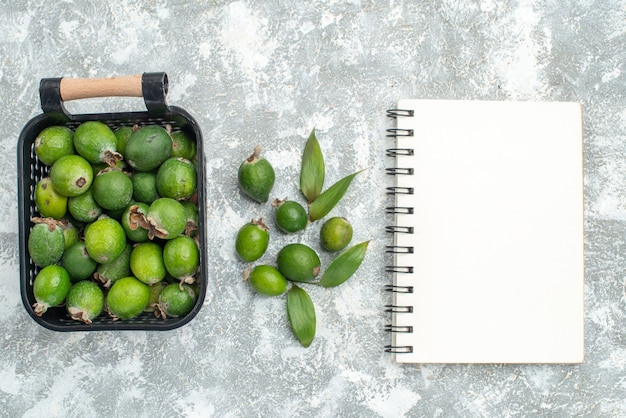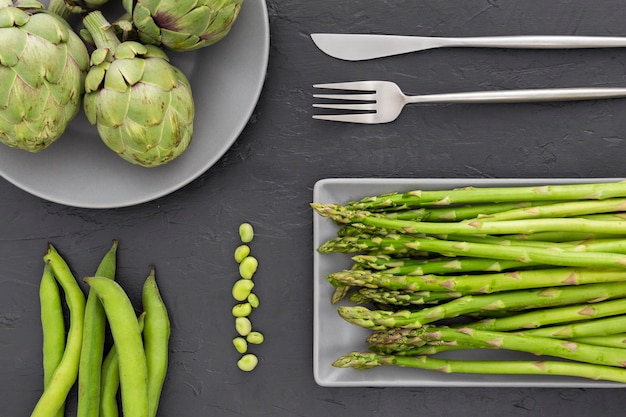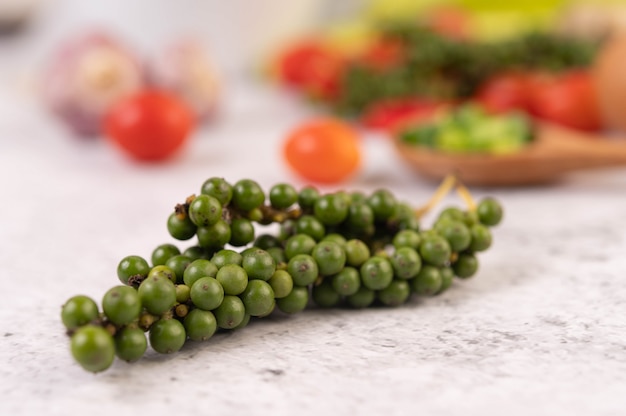There’s something wonderfully satisfying about a perfectly cooked green bean. It’s not just about the vibrant green hue and the delicate snap when you bite into it – it's about capturing that perfect balance between crisp and tender. Too much time in the pan and you're left with a mushy mess; not enough and you're chewing on crunchy green sticks.
Throughout my years in the kitchen, I’ve learned that mastering the art of cooking green beans is a true skill. It's about understanding their nuances, finding the ideal cooking methods, and knowing when to stop. In this article, I’ll share my knowledge, along with a few tips and tricks I've picked up along the way. So, grab your trusty pan, let's dive into the world of green bean cooking, and discover the secrets to achieving that delightful crunch-to-tender balance.
(Part 1) The Green Bean: A Versatile Veggie

Green beans, often overlooked as a simple side dish, are actually a culinary chameleon. They effortlessly adapt to a wide range of cooking methods and flavor profiles. Whether you prefer them steamed, sauteed, roasted, grilled, or even simmered in a soup, there's a green bean recipe out there waiting to be discovered.
But before we jump into the various cooking techniques, let's take a moment to appreciate the green bean itself. It's a vibrant, versatile vegetable that deserves a little love.
The Importance of Freshness
Think of freshness as the secret ingredient that elevates green beans from ordinary to extraordinary. fresh green beans possess an earthy aroma and a crisp, vibrant texture that simply can't be replicated with older beans. You can usually tell by their appearance: they should be bright green, without any signs of wilting or discoloration. And trust your nose, a fresh bean has a crisp, earthy scent.
Choosing the Right Green Beans
The world of green beans offers a variety of shapes and sizes, each with its unique characteristics. Here’s a quick guide to help you choose the perfect green bean for your dish:
- Long and Thin Green Beans: These are the most common variety, known for their delicate texture and subtle flavour. They excel in steaming, sauteing, and roasting.
- Short and Thick Green Beans: These beans have a slightly milder flavour and firmer texture, making them ideal for grilling or adding to salads.
- Curved Green Beans: Often referred to as “French beans,” these beans have a distinct flavour and texture. Their curved shape makes them a perfect choice for sauteing or roasting.
- Purple Green Beans: These beans add a vibrant touch to your dish with their deep purple hue. They have a slightly sweeter flavour than their green counterparts, and are particularly beautiful when roasted or grilled.
Don't be afraid to experiment with different varieties. Each type brings its own unique flavor and texture to the table, allowing you to explore a world of culinary possibilities.
(Part 2) Preparing Green Beans for Cooking

Once you've selected your green beans, a little pre-cooking prep goes a long way in ensuring a delicious end result.
Trimming the Ends
The first step is to trim those ends. Snip off both the stem and the tip, as they tend to be tougher and can impart a slightly bitter flavour.
Washing Thoroughly
Next, give your green beans a thorough wash under cold running water to remove any lingering dirt or debris. Make sure you rinse them thoroughly, especially if you're planning on using them raw in a salad.
Optional: Blanching for a Head Start
Blanching is a handy technique that helps to retain the vibrant green colour and crisp texture of your green beans, especially if you’re in a hurry or planning to use them in a recipe later. Think of it as giving them a quick “head start” in the cooking process. Here's how to blanch green beans:
- Bring a large pot of salted water to a rolling boil. Adding salt to the water helps to season the beans and prevent them from becoming mushy.
- Gently add the green beans to the boiling water and cook for 2-3 minutes, or until they’re just tender-crisp. You don't want to overcook them at this stage, as they will continue to cook in the next step.
- Use a slotted spoon to transfer the green beans to a bowl of ice water. This stops the cooking process and helps to preserve their vibrant green colour.
- Once the green beans are cool, drain them and pat them dry. Now they're ready to be used in your favourite recipe, or stored in the fridge for later.
(Part 3) cooking green beans to Perfection

Now that your green beans are prepped and ready to go, let’s explore the different cooking methods that can transform them into a culinary masterpiece. Each method offers unique flavour profiles and textures, allowing you to tailor your green beans to your specific recipe.
Steaming for a Gentle Touch
Steaming is a gentle cooking method that preserves the natural flavour and nutrients of the green beans. It's a perfect choice for those who prefer a slightly firmer texture and a clean, fresh flavour.
- Fill a saucepan with about an inch of water.
- Place a steamer basket inside the saucepan and bring the water to a boil.
- Add the green beans to the steamer basket and cover the saucepan. You can add a few herbs or spices to the water for a more flavorful steam.
- Steam the green beans for 3-5 minutes, or until they’re tender-crisp. Over-steaming will result in a mushy texture. You want to achieve a slightly firm bite.
Sautéing for a Quick and Savoury Bite
Sautéing is a quick and easy way to cook green beans, adding a touch of flavour and a slight caramelization that enhances their natural taste.
- Heat a drizzle of olive oil in a large skillet over medium-high heat.
- Add the green beans to the skillet and sauté for 5-7 minutes, or until they’re tender-crisp and lightly browned. You want them to be slightly browned on the edges but still maintain their vibrant green colour.
- Season with salt, pepper, and any other desired spices. Garlic, shallots, chilli flakes, or a pinch of red pepper flakes add an extra layer of flavour.
Roasting for a Crispy and Delicious Treat
Roasting is a fantastic way to bring out the natural sweetness of green beans and create a crispy texture. It's also a great option if you're looking for a simple and flavourful side dish.
- Preheat your oven to 200°C (400°F).
- Toss the green beans with a drizzle of olive oil, salt, pepper, and any other desired spices. You can also add chopped garlic, shallots, or herbs to the mixture for extra flavour.
- Spread the green beans in a single layer on a baking sheet. Make sure the beans are spread out evenly to ensure even cooking.
- Roast the green beans for 15-20 minutes, or until they’re tender-crisp and lightly browned. You want the beans to have a slight golden hue and a crispy texture.
Grilling for a Smoky and Charred Delight
Grilling adds a smoky flavour and a slightly charred texture to green beans, making them a perfect accompaniment to summer barbecues.
- Preheat your grill to medium-high heat. Make sure your grill is clean and lightly oiled to prevent the green beans from sticking.
- Toss the green beans with a drizzle of olive oil, salt, pepper, and any other desired spices. A squeeze of lemon juice or a drizzle of balsamic vinegar after grilling adds an extra touch of flavour.
- Grill the green beans for 5-7 minutes, turning occasionally, until they’re tender-crisp and lightly charred. You want the green beans to develop grill marks and a slightly charred texture without becoming burnt.
(Part 4) Checking for Doneness
The key to perfect green beans is finding that sweet spot between crisp and tender. Here are a few tips to help you determine when they're ready:
- Fork Test: Gently pierce a green bean with a fork. It should go in easily but with a slight resistance. If it's too easy, it's overcooked.
- Visual Clues: The green beans should have a vibrant green colour and be slightly softened but not mushy. If they look dull or limp, they're likely overcooked.
- Taste Test: There's no substitute for a good taste test. Take a bite. It should be cooked through but still have a bit of a bite to it.
(Part 5) Serving Green Beans with Style
Once you’ve achieved that perfect cook, it's time to present your green beans in a way that complements their deliciousness.
Simple and Elegant
For a simple and elegant presentation, simply arrange the cooked green beans on a platter and garnish with a sprinkle of fresh herbs like parsley or dill. A squeeze of lemon juice or a drizzle of olive oil adds an extra touch of flavour and visual appeal.
Side Dish with a Twist
Green beans make a fantastic side dish for a variety of main courses. Try serving them alongside roasted chicken, grilled fish, or a hearty steak. Add a bit of crunch by tossing them with toasted almonds, walnuts, or pecans.
A Star of the Show
Don't be afraid to let green beans take centre stage! Create a delicious salad with green beans as the main ingredient. Toss them with other fresh vegetables like cherry tomatoes, red onion, and cucumber. A tangy vinaigrette brings out the flavours and adds a touch of zest.
(Part 6) Beyond the Basics: Experimenting with Flavour
While classic green bean preparations are always a welcome addition to any meal, don’t be afraid to experiment with new flavours and techniques. Here are a few ideas to inspire your culinary creativity:
Garlic and Lemon
A classic combination that never fails to impress, garlic and lemon perfectly complement the earthy flavour of green beans. Sauté the green beans with minced garlic and a squeeze of lemon juice for a flavourful and refreshing dish.
Ginger and Soy Sauce
For an Asian-inspired twist, toss the green beans with a bit of grated ginger and a splash of soy sauce. A pinch of red pepper flakes adds a touch of heat for those who prefer a spicy kick.
Bacon and Brown Sugar
This unexpected combination is a truly delicious treat. The sweetness of the brown sugar and the smoky flavour of the bacon create a delectable contrast to the earthy green beans.
Chilli and Lime
For a burst of vibrant flavour, sauté the green beans with a pinch of chilli flakes and a squeeze of lime juice. The combination of heat and tang adds a refreshing touch to the dish.
(Part 7) Storing Leftover Green Beans
It happens to the best of us: sometimes we end up with leftover green beans. But fear not, you can easily store them and enjoy them later.
- Refrigerate: Place the leftover green beans in an airtight container and store them in the refrigerator for up to 3-4 days.
- Freeze: You can also freeze leftover green beans for longer storage. Blanch them first to preserve their colour and texture, then pack them in freezer-safe bags. They’ll last for up to 6 months in the freezer.
(Part 8) FAQs about Green Bean Cooking
What happens if I overcook green beans?
Overcooked green beans become mushy and lose their vibrant green colour. They also lose their flavour and texture. There’s not much you can do to salvage them; it's best to start over with a fresh batch.
Can I cook green beans with the ends on?
It’s best to trim the ends of green beans before cooking. The ends tend to be tougher and more bitter than the rest of the bean. Trimming them ensures a more pleasant eating experience.
What are some good seasonings for green beans?
There are many delicious seasonings that go well with green beans. Some of the most popular include salt, pepper, garlic powder, onion powder, paprika, and herbs like parsley, dill, and thyme. You can also get creative and add a touch of sweetness with a sprinkle of brown sugar or honey.
What are the health benefits of green beans?
Green beans are packed with nutrients, including vitamins A, C, and K. They’re also a good source of fibre and antioxidants. Eating green beans regularly can help to improve digestion, boost your immune system, and protect against chronic diseases.
Are all green beans created equal?
While all green beans are nutritious and delicious, some varieties have slightly different flavours and textures. Experiment with different types to find your favourites. And don’t be afraid to try new things! The world of green beans is your oyster.
I hope you found this article helpful and informative. Happy cooking!
Everyone is watching

Corn on the Cob: The Ultimate Guide to Perfectly Cooked Ears
Healthy MealsAh, corn on the cob. Just the name evokes images of sunny days, barbecues, and that sweet, juicy flavour that ...

Perfect Pork Roast Oven Cooking Time: A Guide to Delicious Results
Healthy MealsThere's something truly satisfying about a perfectly roasted pork. The aroma alone is enough to make your mout...

Ham Cooking Time: How Long to Bake, Smoke, or Boil a Delicious Ham
Healthy MealsAh, ham. It's a classic, isn't it? A real crowd-pleaser, especially around holidays. And when done right, it'...

Scallops: The Ultimate Guide to Perfect Cooking
Healthy MealsAh, scallops. Those delicate, sweet, and utterly delicious morsels of the sea. They hold a special place in my...

Spaghetti Squash: The Ultimate Guide to Cooking and Serving
Healthy MealsRemember that time you saw spaghetti squash at the supermarket, looking all bumpy and strange, and thought, "W...
